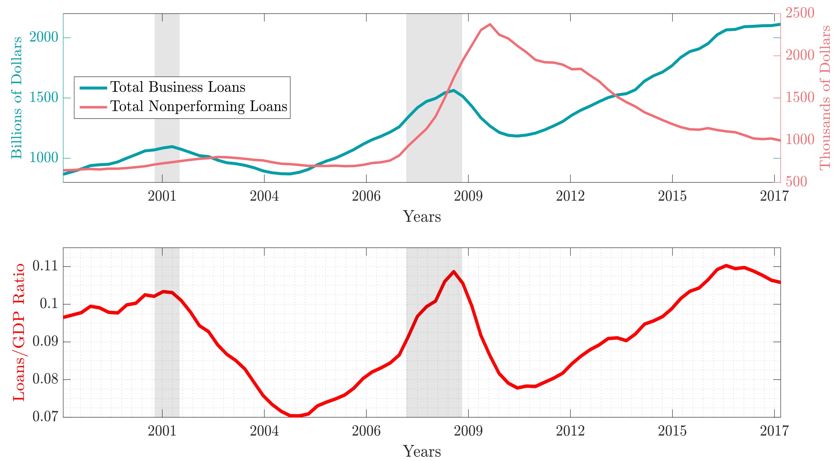References
Aikman, D., Kelly, R., McCann, F., and Yao, F. (2021). The Macroeconomic Channels of Macroprudential Mortgage Policies. Financial Stability Notes, Central Bank of Ireland., 11.
Alpandaa, S. and Zubairy, S. (2017). Addressing Household Indebtedness: Monetary, Fiscal or Macroprudential Policy? European Economic Review, 92:47–73.
Bianchi, J. and Mendoza, E. G. (2018). Optimal Time-consistent Macroprudential Policy. Journal of Political Economy, 126(2):588–634.
Christensen, I., Corrigan, P., Mendicino, C., and Nishiyama, S.-I. (2009). Consumption, Housing Collateral, and the Canadian Business Cycle. Bank of Canada Working Paper, 26.
Drechsel, T. and Kim, S. (2022). Macroprudential Policy with Earnings-based Borrowing Constraints.
Franz, T. (2020). The Effects of Borrower-Based Macroprudential Policy: An Empirical Application. International Journal of Central Banking, 64.
Geanakoplos, J. and Zame, W. R. (2007). Collateralized Asset Markets. Discussion Paper, Yale University.
Guerrieri, V. and Lorenzoni, G. (2017). Credit Crises, Precautionary Savings and the Liquidity Trap. Quarterly Journal of Economics, 132(3):1427–1467.
Iacoviello, M. and Pavan, M. (2013). Housing and Debt Over the Life Cycle and Over the Business Cycle. Journal of Monetary Economics, 60(2):221–238.
Justiniano, A., Primiceri, G., and Tambalotti, A. (2015). Household Leveraging and Deleveraging. Review of Economic Dynamics, 18(1):3–20.
Kim, S. and Mehrotra, A. (2018). Effects of Monetary and Macroprudential Policies—Evidence from Four Inflation Targeting Economies. Journal of Money, Credit, and Banking, 50(5):967–992.
Lambertini, L., Mendicino, C., and Punzi, M. T. (2013). Leaning Against Boom–bust Cycles in Credit and Housing Prices. Journal of Economic Dynamics & Control, 37.
Martin, A., Mendicino, C., and Van der Ghote, A. (2021). On the Interaction between Monetary and Macroprudential Policies. ECB Working Paper Series, 2527.
Mendicino, C., Nikolov, K., Rubio-Ramirez, J., Suarez, J., and Supera, D. (2020). Twin Defaults and Bank Capital Requirements. Working Paper.
Ottonello, P., Perez, D. J., and Varraso, P. (2022). Are Collateral-constraint Models Ready for Macroprudential Policy Design? Journal of International Economics, page 103650.
Ottonello, P. and Song, W. (2022). Financial Intermediaries and the Macroeconomy: Evidence from a High-Frequency Identification. Working Paper.
Rubio, M. and Carrasco-Gallego, J. A. (2014). Macroprudential and Monetary Policies: Implications for Financial Stability and Welfare. Journal of Banking & Finance, 49.
Van der Ghote, A. (2021). Interactions and Coordination between Monetary and Macroprudential Policies. American Economic Journal: Macroeconomics, 13(1):1–34.






